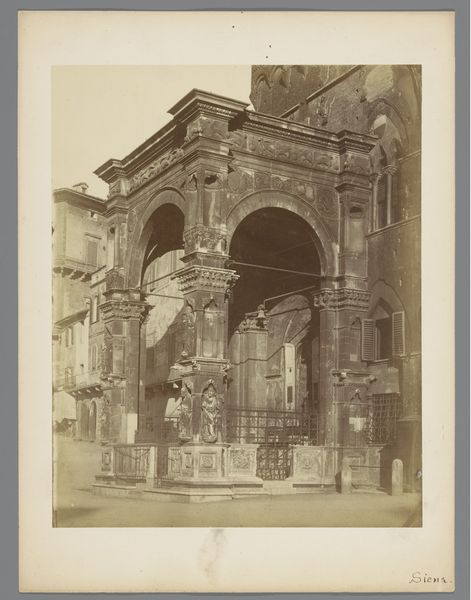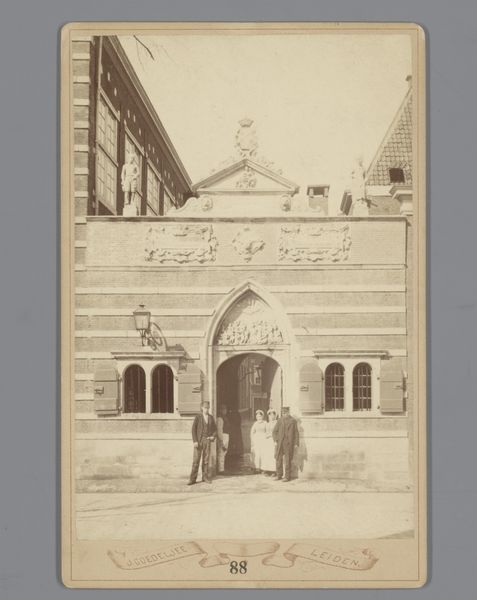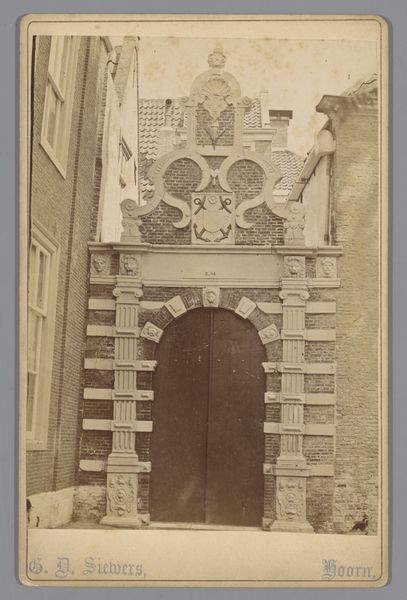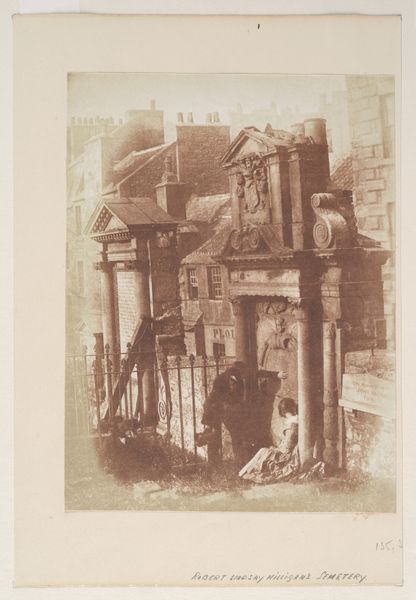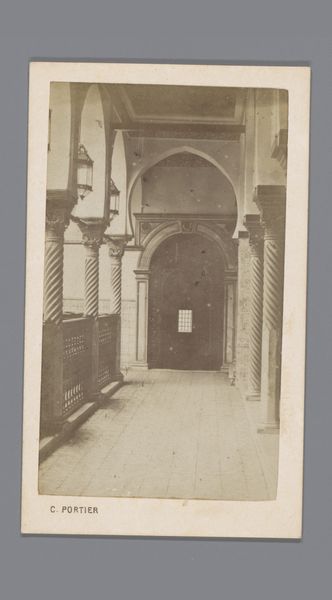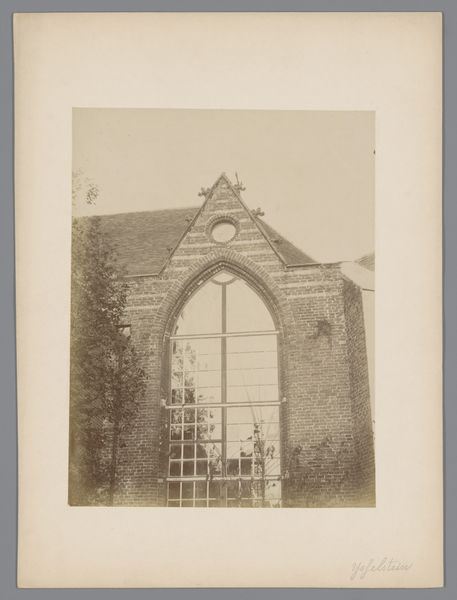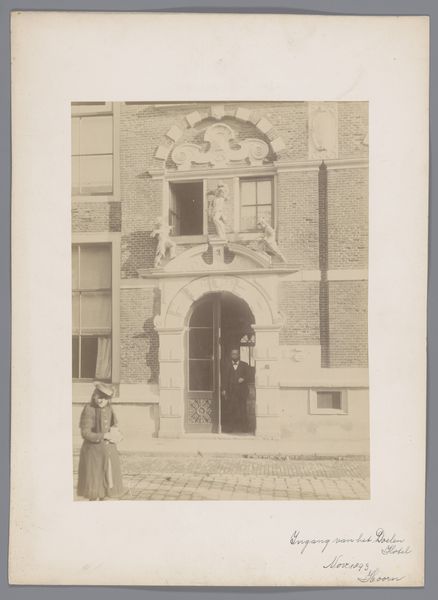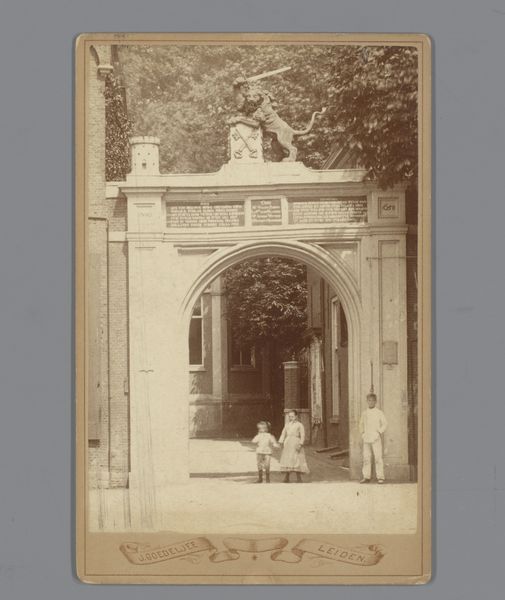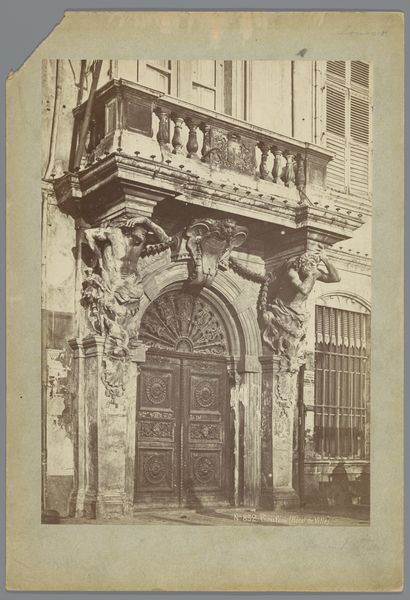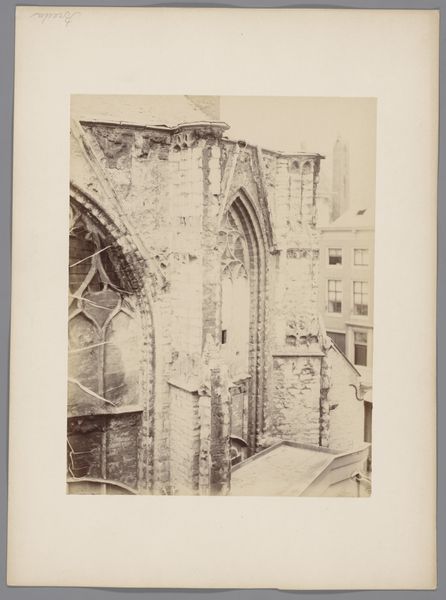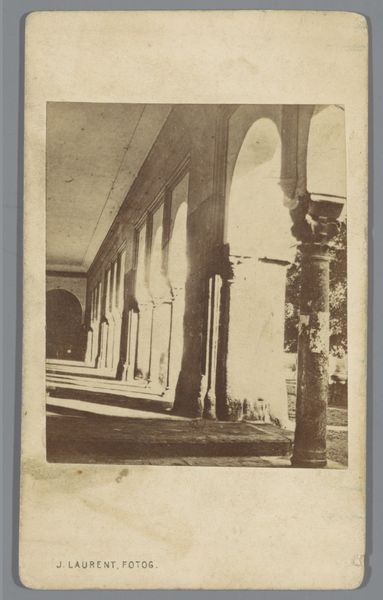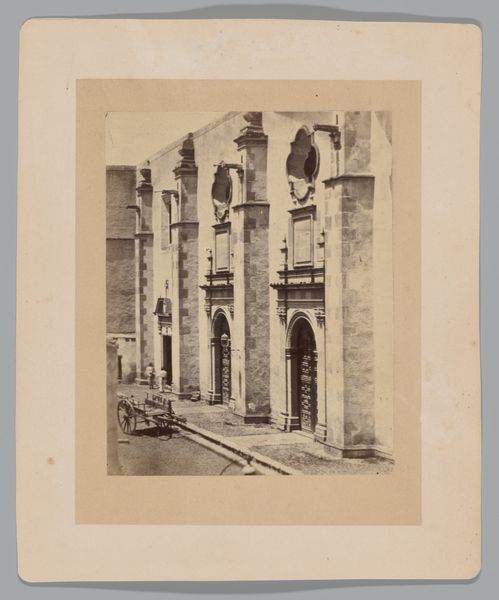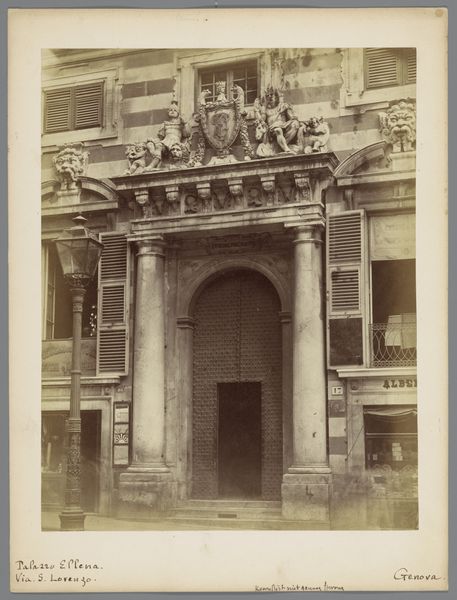
Dimensions: height 129 mm, width 96 mm, height 152 mm, width 106 mm
Copyright: Rijks Museum: Open Domain
Editor: So, this gelatin-silver print, "Poort naar de tombe van Guglielmo da Castelbarco in Verona," is estimated to be from between 1851 and 1900. It gives off a somber, almost haunting feeling. What symbols do you see here that strike you? Curator: Well, immediately, the tomb itself is heavy with meaning. Consider the cultural weight of tombs across civilizations; they're not just about death, but also memory, legacy, and a society’s values. Notice how it is framed by the architecture—a convergence of sacred and civic space. Editor: That’s a great point. The way it's placed, almost swallowed by the surrounding buildings... It's intriguing, definitely gives context to its purpose within the city itself. Curator: Precisely! Think about what the photograph itself symbolizes. This image was captured during a specific era. The decision to record this particular monument speaks volumes. Are we preserving history or romanticizing the past? What kind of statement does it make? Editor: I see what you mean. It almost feels staged, perhaps emphasizing a specific narrative about Verona’s past, especially with the figures in the foreground. Do they amplify the narrative somehow? Curator: Absolutely, consider their clothing and posture. How do they contribute to the story, or the intended emotional response? The way light and shadow interplay enhances this effect, making it more theatrical and less documentary. It makes you think about constructed realities and cultural memories. Editor: I hadn't considered the photograph itself as part of the storytelling, beyond just documentation. Thanks for pointing out the performative nature inherent in choosing what, and how, to capture a monument in this manner! Curator: The real genius often lies not in the subject alone, but in the layers of meaning that accumulate over time through our evolving perception and reinterpretation of the image. It really speaks to how memories evolve with the passage of time.
Comments
No comments
Be the first to comment and join the conversation on the ultimate creative platform.
